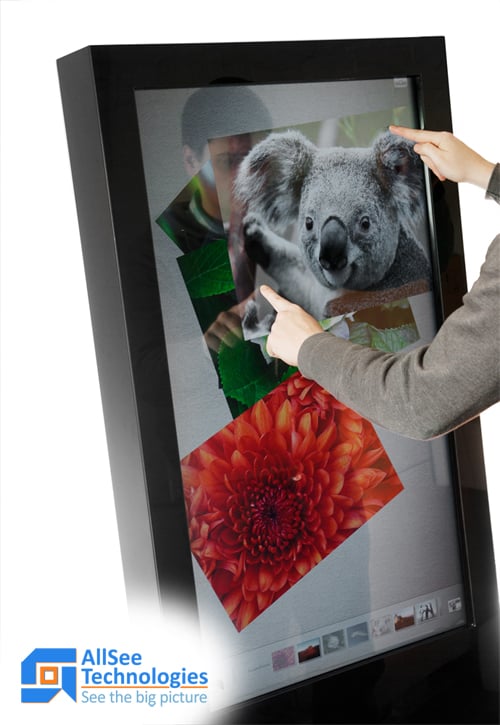
Touch Screens – when does a digital signage project call for interactivity?
With the digital signage revolution well underway and the price of touch screens falling year on year, important questions for marketers have emerged; when does a digital signage project need to be interactive and in which scenarios are touch screens most effective?
Digital signage is widely recognized as being the most effective and noticeable means of delivering a message to consumers and its advantages over the more traditional printed alternatives are clear to see. Digital displays are brighter, more captivating, reusable, more targeted, easier to update and provide many unique marketing and advertising opportunities. It stands to reason that if your objective is purely to deliver a message then interactivity is likely not to be essential. In large scale examples such as billboards or unreachable hoardings having a touch function would of course be rather pointless. Digital signage and touch screens simply play in different spaces.
There are many digital signage applications where touch functionality is desirable and a few where it is essential. For example, any Point Of Purchase or Point Of Sale display could have a number of “start” buttons to launch various promotional videos. This both draws the customer into the product or service as well as delivering a highly valuable targeted message. Increasingly, retail outlets are deploying touch screens to give customers a more comprehensive online-style service. As online shopping continues to take over, large high street chains are being forced to rethink their sales strategies. By combining the familiar “at a glance” structured nature of online shopping with a physical browsing experience, shops are beginning to win back sales from their online competitors. It would therefore seem that the retail environment is ideal for touch screen deployment.
According to two Aberdeen Group reports released last year, 27% of retailers are intending to install touch screens to enhance audio and video communication. A massive 1/3 of retailers are looking to invest in an in store web-style experience for customers to check features, stock levels and possible variations of a product. In the same reports it was found that those retailers looking to proficiently deploy touch screens were four times more likely to see higher than 80% customer satisfaction in store.
As well as being used to generate sales, touch screens are also being used to dispense information. Another non-essential, but very convenient application for touch screens is disseminating information in museums and art galleries. In any given exhibit or art installation there is nearby literature or notices describing the work and the artist. The use of a touch screen in this situation makes for a much more efficient use of space, allowing supplementary accompanying information to be displayed. In a similar way touch screens can be used as an educational tool, using interactivity to promote learning. At different levels touch screens can be used to help students understand more challenging areas of the curriculum by having them physically solve problems.
touch screens have amazing functions and provide businesses with entirely unique possibilities to promote their products and services. It is understandable why touch screens allow retailers to create a more customer-centric experience and schools to find a fresh way of reaching students. It is essential to question the importance of interactivity within your specific digital signage project.

Thomas Fraser-Bacon is the Marketing Director for Allsee Technologies. His background is in Digital Signage and Product Design.


